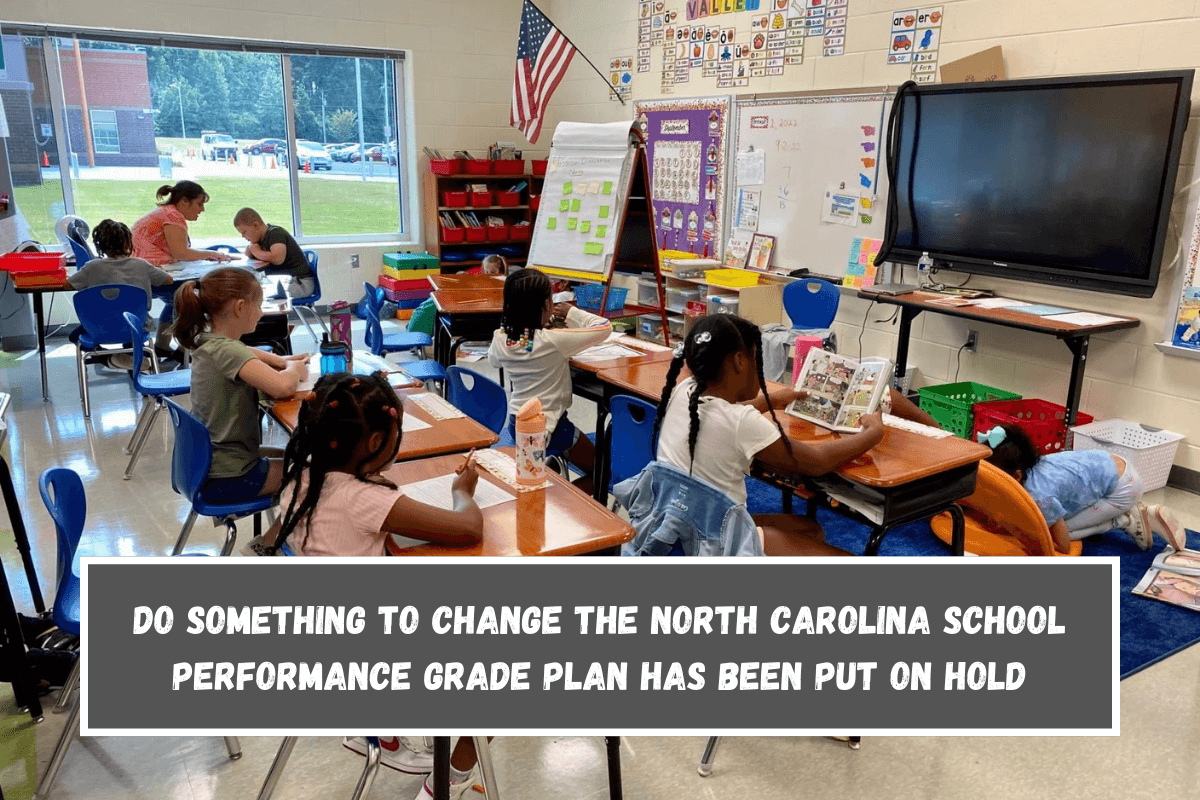The North Carolina Department of Public Instruction put out information on how well schools were doing the first week of September.
“D” and “F” school scores went down a little across the state this year. But even though they were happy about the trend, state school leaders still took the time to talk about the problems with how these grades are calculated.
In North Carolina, test results make up 80% of a school’s grade, and how much growth students make makes up the other 20%. There has been work to change that model for the last two years by NCDPI.
Andy Smith, Deputy State Superintendent, says that the current metrics only show a short period of time: the end-of-course and end-of-grade tests that students take in May and June.
Smith said, “So they do give us a clear picture of things like proficiency and how many kids can read at grade level.” “It also gives us a better idea of how much our kids are growing.”
Smith says that most people don’t believe the present model is very good at showing all the things that happen in schools. That’s what a statewide poll with more than 25,000 answers said.
So, Smith said, “we began to wonder, ‘Well, if it’s not very good at capturing or measuring what high quality looks like, what might high quality be?'”
Smith found that the present model doesn’t take into account a lot of the things that teachers and parents care about. Like how safe the school is and whether the kids go to college or get a job after they graduate.
People came up with a long list of things that could be measured, but Smith put together a 45-person group to narrow the list down to eight. These indicators include the graduation rate, chronic absenteeism, and school atmosphere.
After that, more expert groups were made to look into each one. From May to November of last year, they got together once a week for four hours. They looked at the study that had been done on these indicators, as well as their usefulness, validity, and dependability.
Smith said, “Because, you know, once these are part of a school’s accountability system, people start to pay attention to them.” “People pay attention when you put it in the model and say that proficiency is important, but being absent a lot is also important. That’s why we had to fully understand them before we could change the rules.
In February of this year, officials from the NCDPI told the House Select Committee on Education Reform about ways to change the plan. They talked about adding measures for “readiness” and “opportunity.” These would include things like getting ready for college, the atmosphere at school, and events outside of school.
Smith says that lawmakers backed their efforts and put forward House Bill 1057. It wants to start a pilot program to update school performance grades. Half of the score is based on skill level, thirty percent on growth, and twenty percent on these new factors.
After the first reading, the bill didn’t go anywhere else. Back then, the General Assembly was having some pretty heated budget talks. Smith, on the other hand, says that NCDPI can’t change the way schools give grades without also changing the law.
Smith said, “That bill pretty much tells the agency to do that work.” “It also sends a very clear message to stakeholders, school administrators, and teachers across our state that the General Assembly is serious about changing the way it thinks about school performance grades and accountability.”
But there’s another thing going on as well, he says. He hopes that the lawmakers want the work to keep going.
Smith said, “We know that we will have a new state superintendent.” “As we think about this suggestion, we want to make sure that everything is in sync.”
The work to change the way schools give grades for success began when Catherine Truitt was State Superintendent. She lost the primary, though, so someone else will be elected in the next election. The work could go in a different direction if the new superintendent has different ideas about the plan.
Smith is sure, though, that the bill will be passed when the General Assembly meets again in January. If it does, there will be a test program for two years. First, with a small group of charter schools and public school systems. It would spread across the whole state in the second year.
Smith says that once that is done, a new model for grading school success would be ready to be used in the 2027-25 school year.















Leave a Reply